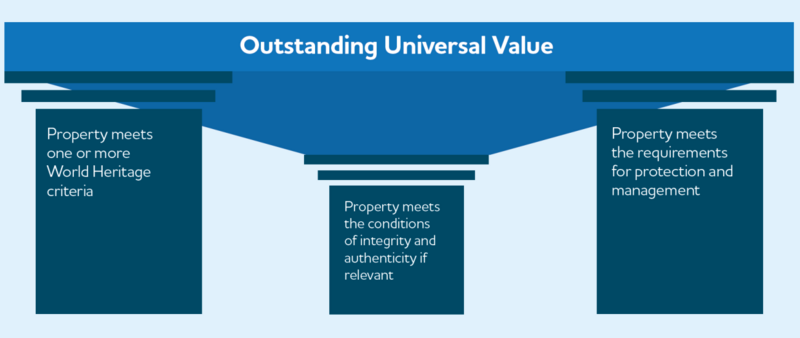Becoming World Heritage

To be included on the World Heritage List, sites must qualify in three ways – they must meet one of the UNESCO’s selection criteria, show integrity and be adequately managed and protected. All three must be in place for a property to be judged to have Outstanding Universal Value, which is the final piece to the puzzle of becoming a World Heritage site. The Wadden Sea checked off all of the requirements.
Outstanding Universal Value
An ‘Outstanding Universal Value’ or OUV describes why the designated site is one of the most remarkable places on earth. Outstanding Universal Value means cultural and/or natural significance which is so exceptional as to transcend national boundaries and to be of common importance for present and future generations of all humanity. As such, the permanent protection of this heritage is of the highest importance to the international community as a whole.
The Wadden Sea’s OUV is that it is the largest tidal flat system in the world, where natural processes proceed largely undisturbed. It encompasses a multitude of transitional zones between the land and the sea and freshwater environment and it is rich in species specially adapted to the demanding environmental conditions. It is one of the most important areas for migratory birds and is connected to other key sites for these migratory birds on the Northern and Southern hemisphere.
Checked criteria
Next, a site has to meet at least one out of UNESCO’s ten selection criteria (OG para 77 i-x). The Wadden Sea checks off three.
Geological processes (Criterion viii)
Nowhere else on the planet is there such diverse and dynamic coastline of this scale, continuously being shaped by wind and tides. These natural processes, running largely uninterruptedly across the Wadden Sea for millennia, creating islands, sandbanks, channels, mud flats, gullies, saltmarshes and dunes you can experience today.
Ecological and biological processes (Criterion ix)
Nature has provided an invaluable record of past and ongoing dynamic adaptation of plants, animals and their coastal environments to global change. The productivity of biomass is one of the highest in the world and offers wide food availability for fish, shellfish and birds.
Biodiversity (Criterion x)
Despite its tranquil appearance, the Wadden Sea World Heritage is among the largest wildernesses in Europe and one of the main hotspots of biodiversity in the world. The Wadden Sea sustains over 10,000 species of plants and animals. In addition, it plays an indispensable role well beyond its borders: the richness of local species is crucial for up to 12 million of migratory birds that make a stopover in the area on their journey to their wintering or summering grounds.
Intact and protected
Last but not least, the protection, management, authenticity and integrity of properties are also taken into consideration by the World Heritage Committee.
Integrity
The Wadden Sea World Heritage consists of all the facets (species, habitats, processes) that constitute a natural and dynamic Wadden Sea. The area is large enough to ensure that these exceptional aspects of one of the world’s first class ecosystems of this kind are included and maintained.
Protection and management
Protection and management of the World Heritage site are effectively secured. The Wadden Sea’s supreme conservation state is the result of four decades of joint nature protection efforts of Denmark, Germany and the Netherlands, where the Wadden Sea is designated as national parks and nature reserves. Working together in the Trilateral Wadden Sea Cooperation, these countries ensure the integrated management of the area. Each state has comprehensive protection measures in place. The protection of one inseparable ecosystem that knows no borders and hence is a joint responsibility towards the world community and for the benefits of present and future generations.

